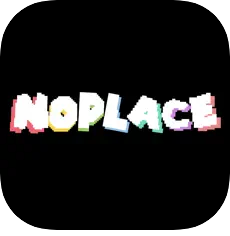NoPlace: The Social Media Platform Gaining Momentum in a Crowded Market
As the social media landscape continues to evolve, new platforms emerge, offering alternatives to traditional giants like Facebook, Instagram, and Twitter. One such platform is NoPlace, a rising star in the world of social media that is rapidly gaining a dedicated user base. More and more people are drawn to NoPlace due to its distinct approach to online interaction, data privacy, and community-driven content. This essay will explore the features, philosophies, and impact of NoPlace, as well as the reasons behind its increasing popularity.
Introduction to NoPlace
NoPlace was created as a response to widespread dissatisfaction with mainstream social media platforms. Launched in recent years, it has quickly become known for its user-first approach, focusing on privacy, meaningful community engagement, and a rejection of the intrusive algorithms and data monetization strategies commonly found on other platforms.
NoPlace’s tagline, “A Place for Everyone and No One,” reflects its mission to create an open, inclusive space where users can be themselves without feeling the pressures of performance or surveillance. The platform appeals to a broad demographic, but it resonates particularly with younger generations like Millennials and Gen Z, who are increasingly skeptical of traditional social media models that prioritize profit over user well-being.
Key Features of NoPlace
NoPlace distinguishes itself through a set of core features that aim to foster more authentic, enjoyable, and secure online interactions. These features stand in stark contrast to the characteristics of established platforms, which are often criticized for exploiting user data, encouraging superficial engagement, and amplifying harmful content.
1. Privacy by Design
One of the foundational pillars of NoPlace is its emphasis on privacy. Unlike traditional social media platforms that profit from user data, NoPlace ensures that users retain complete control over their personal information. The platform employs robust encryption methods to safeguard user data, and it does not sell or share information with advertisers or third parties. Additionally, users have the option to make their profiles private, control who can see their posts, and even delete their data permanently if they decide to leave the platform.
- Why it matters: In an era where data breaches and privacy concerns are at the forefront of digital discussions, NoPlace’s commitment to privacy is a major draw for users seeking a more secure social media experience.
2. Ad-Free Experience
NoPlace is ad-free, meaning users do not have to contend with targeted ads or corporate-sponsored content interrupting their feed. This absence of ads aligns with the platform’s philosophy of creating a more authentic and distraction-free space for users to interact. Without the need to maximize user engagement for advertising revenue, NoPlace is free from many of the manipulative tactics that other platforms use to keep users scrolling endlessly.
- Why it matters: For users tired of the commercialization of their online experience, NoPlace offers a refreshing break from constant marketing. The ad-free model helps create a more user-centred environment, where people can focus on meaningful interactions rather than consumerism.
3. No Algorithms, Chronological Feeds
Unlike platforms like Instagram or Facebook, which rely heavily on algorithms to determine what users see, NoPlace employs a chronological feed. This feature ensures that users see posts in the order they were shared, rather than based on algorithmic predictions about what will drive the most engagement. The result is a more transparent and organic social experience, where users control what they see, rather than having an algorithm dictate their feed.
- Why it matters: Algorithms have been widely criticized for creating echo chambers, promoting divisive content, and encouraging unhealthy social comparisons. By opting for a chronological feed, NoPlace offers a more straightforward, less manipulative user experience.
4. Community-Driven Interaction
At the heart of NoPlace are its Spaces, user-created communities centred around shared interests, values, or causes. These Spaces function as sub-communities where users can engage in deeper, more focused discussions. Unlike the broad, sometimes impersonal experience on platforms like Twitter, NoPlace’s Spaces allows for more meaningful conversations in smaller, like-minded groups.
- Why it matters: The focus on smaller, community-driven interactions helps reduce the noise and superficiality that often accompany larger social networks. Users can connect with people who share their interests and values, creating a more supportive and engaging online environment.
5. Content Ownership
NoPlace takes a bold stance on content ownership, ensuring that users retain full control over the material they share. This is a significant departure from traditional social media platforms, where user-generated content is often monetized and repurposed by the platform itself. On NoPlace, users can choose how their content is used and shared, with the option to delete it at any time.
- Why it matters: As concerns about content ownership and intellectual property grow, particularly among creators and influencers, NoPlace offers a solution that prioritizes user rights and agency.
The Rise of NoPlace: Why More Users Are Switching
The success of NoPlace can be attributed to several key factors, including growing frustration with the established social media platforms, increased awareness of data privacy issues, and a desire for more authentic online experiences. Below, we explore the reasons behind NoPlace’s rise and why it has become an attractive alternative for many users.
1. Dissatisfaction with Traditional Platforms
Over the years, many users have grown disillusioned with platforms like Facebook, Instagram, and Twitter. These platforms, which once promised to connect the world, have been plagued by scandals involving data privacy breaches, misinformation, and the negative psychological effects of social media use. Users have become increasingly aware of how these platforms manipulate their attention, monetize their personal data, and prioritize sensational or divisive content to keep them engaged.
NoPlace provides a direct response to these concerns. By offering a platform free of ads, algorithms, and corporate interests, NoPlace addresses the growing dissatisfaction with the exploitative practices of mainstream social media.
2. The Rise of Digital Privacy Awareness
In recent years, digital privacy has become a central concern for internet users, especially after high-profile incidents such as the Cambridge Analytica scandal (Journalist Harry Davies of The Guardian initially revealed in December 2015 that Cambridge Analytica was collecting personal data. He revealed that, without the consent of millions of Facebook users, Cambridge Analytica was utilising data mined from those accounts to work for US Senator Ted Cruz. . As people become more conscious of how their data is collected and used, they are seeking platforms that prioritize their privacy. NoPlace’s privacy-first approach, which includes data encryption and user-owned content, directly appeals to this growing desire for more control over personal information.
Additionally, as government regulations such as the General Data Protection Regulation (GDPR) and the California Consumer Privacy Act (CCPA) push for greater accountability from tech companies, NoPlace positions itself as a platform that is ahead of the curve in terms of data protection and user rights.
3. A Shift Toward Authenticity
NoPlace’s emphasis on community, meaningful interactions, and authenticity aligns with a broader cultural shift toward more genuine online experiences. Many users, especially younger generations, are rejecting the performative nature of platforms that prioritize vanity metrics like likes, follows, and shares. Instead, they are seeking spaces where they can engage in honest conversations and build deeper connections.
NoPlace’s design, which de-emphasizes popularity and encourages participation in smaller, interest-based communities, offers a more intimate and authentic social experience. This shift toward meaningful interaction is a significant factor driving users to the platform.
4. Appeal to Content Creators
For content creators—whether artists, writers, or influencers—NoPlace offers a platform where they can share their work without the pressure of algorithms or the threat of their content being repurposed for profit. The platform’s commitment to content ownership ensures that creators retain control over their intellectual property, which is increasingly important in an era where content is often commodified.
Additionally, without ads driving the platform, NoPlace provides a space where creators can focus on quality rather than quantity, fostering a more supportive environment for creative work.
The Future of NoPlace
As NoPlace continues to grow, it is poised to have a significant impact on the social media landscape. Its rise signals a broader shift toward privacy-conscious, community-driven platforms that prioritize user experience over profit. However, as NoPlace scales, it will face several challenges, including how to maintain its core values while accommodating a larger user base.
1. Scaling the Platform
One of the key challenges NoPlace will face as it grows is how to scale its infrastructure while maintaining its decentralized, user-first model. As more users join the platform, it will need to invest in technology that ensures continued privacy and data security, as well as tools for effective moderation within its community Spaces.
2. Balancing Free Expression with Content Moderation
Like all social media platforms, NoPlace will need to navigate the fine line between promoting free expression and preventing the spread of harmful content. With its decentralized, community-driven approach, NoPlace relies on individual Spaces to moderate their own content. However, as the platform grows, it will need to implement systems that ensure harmful behaviour is addressed while preserving the platform’s commitment to free speech.
3. Influence on the Broader Social Media Ecosystem
NoPlace’s success may influence the broader social media industry, pushing established platforms to adopt more user-centric policies. As privacy concerns, dissatisfaction with algorithms, and the demand for more authentic experiences grow, major platforms may need to reevaluate their models to remain competitive.
Conclusion
NoPlace represents a new wave of social media platforms that prioritize privacy, authenticity, and community-driven interaction. As more users seek alternatives to the established social media giants, NoPlace offers a refreshing and secure space for meaningful connections. Its rise reflects broader trends in digital privacy awareness, dissatisfaction with algorithm-driven platforms, and a desire for more genuine online experiences. While NoPlace faces challenges as it grows, its early success suggests that the future of social media may lie in platforms that put users first.
What are you waiting for? Contact our team or digital marketing experts today to learn more about how we can transform your online presence and drive sustainable growth for your business.

